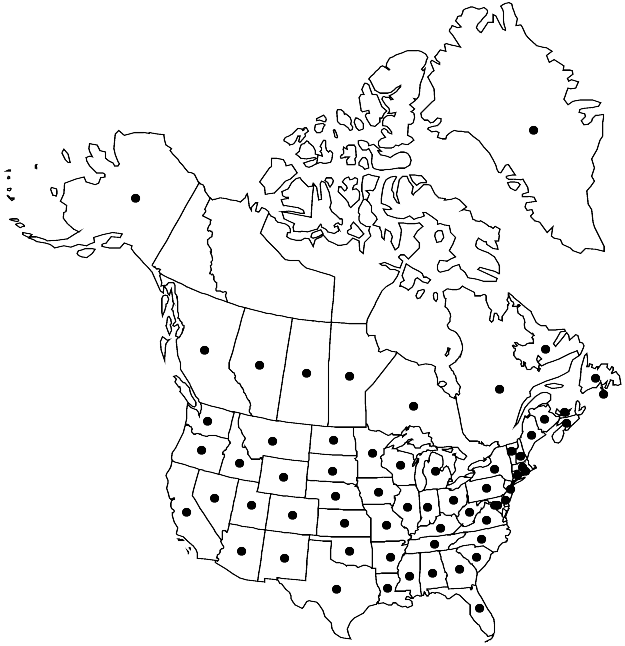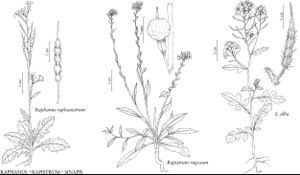Raphanus raphanistrum
Sp. Pl. 1: 669. 1753.
Annuals, roots not fleshy; sparsely to densely pubescent. Stems usually simple from base, (2–)3–8 dm, (retrorsely hispid). Basal leaves: petiole 1–6 cm; blade oblong, obovate, or oblanceolate in outline, lyrate or pinnatifid, sometimes undivided, 3–15(–22) cm × 10–50 mm, margins dentate, apex obtuse or acute; lobes 1–4 each side, oblong or ovate, to 4 cm × 20 mm (smaller than terminal). Cauline leaves (distal) subsessile; blade often undivided. Fruiting pedicels divaricate or ascending, 7–25 mm, (straight). Flowers: sepals 7–11 × 1–2 mm, sparsely pubescent; petals yellow or creamy white (veins dark brown or purple), 15–25 × 4–7 mm, claw to 15 mm; filaments (slender), 7–12 mm; anthers 2–2.5 mm. Fruits cylindrical or narrowly lanceolate; valvular segment 1–1.5 mm; terminal segment (1.5–)2–11(–14) cm × (2.5–)3–8(–11) mm, (base rounded), strongly constricted between seeds (usually breaking), strongly ribbed, beak narrowly conical; style 10–50 mm. Seeds (reddish brown or dark brown to black), oblong or ovoid, 2.5–3.5 × 1.8–2.5 mm. 2n = 18.
Phenology: Flowering May–Jul.
Habitat: Disturbed waste places, cultivated fields, roadsides, orchards, hill slopes
Elevation: 0-800 m
Distribution

Greenland, St. Pierre and Miquelon, Alta., B.C., Man., N.B., Nfld. and Labr., N.S., Ont., P.E.I., Que., Sask., Ala., Alaska, Ariz., Ark., Calif., Colo., Conn., Del., D.C., Fla., Ga., Idaho, Ill., Ind., Iowa, Kans., Ky., La., Maine, Md., Mass., Mich., Minn., Miss., Mo., Mont., Nebr., Nev., N.H., N.J., N.Mex., N.Y., N.C., N.Dak., Ohio, Okla., Oreg., Pa., R.I., S.C., S.Dak., Tenn., Tex., Utah, Vt., Va., Wash., W.Va., Wis., Wyo., Europe, Asia, introduced also in Mexico, Central America, South America, Africa, Atlantic Islands, Australia.
Discussion
North American representatives of Raphanus raphanistrum are referable to subsp. raphanistrum. Four other subspecies are restricted to Europe.
Selected References
None.
